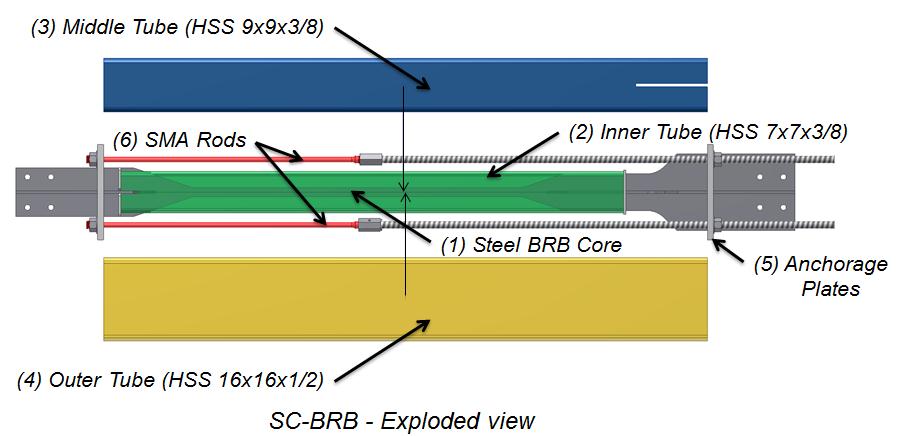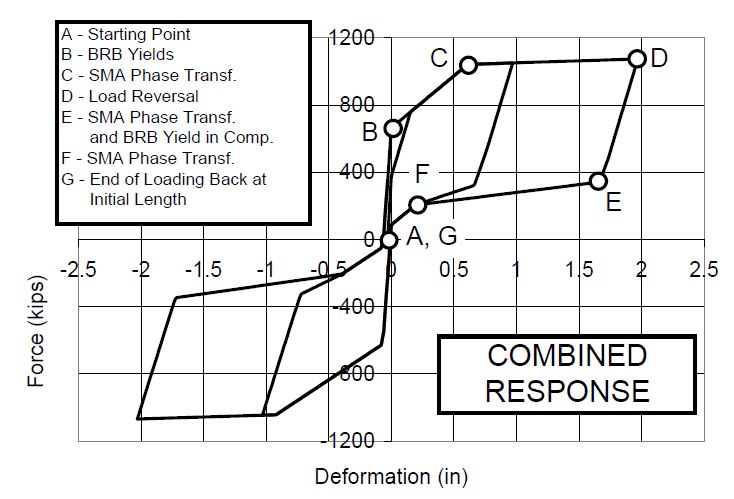Jul 2011
Development of a Self-Centering Buckling Restrained Brace
The project led by Larry Fahnestock at the University of Illinois, involves the investigation of the the seismic behavior and performance of self-centering buckling-restrained braces (SC-BRBs). A SC-BRB consists of a typical BRB component, which provides energy dissipation, and pre-tensioned superelastic NiTi shape memory alloy (SMA) rods, which provide self-centering. The SMA rods are attached to the BRB portion of the brace using a set of concentric tubes and free-floating end plates that cause the SMA rods to elongate when the brace is in both tension and compression. Half-scale SC-BRBs were designed and fabricated and their hysteretic response was examined by subjecting them to a cyclic loading protocol. The results of the experiments were used to validate a SC-BRB numerical model, which is used to conduct further parametric studies of SC-BRB behavior and to perform system studies of concentrically-braced frames with SC-BRBs.


Eatherton, M.R., Fahnestock, L.A., and Miller, D. (2014) “Computational Study on the Behavior of Self-Centering Buckling Restrained Braces” Earthquake Engineering and Structural Dynamics, Vol. 43, No. 13, pp. 1897-1914.
Miller, D. J., Fahnestock, L. A., and Eatherton, M.R. (2011) “Development and Experimental Validation of a Nickel-Titanium Shape Memory Alloy Self-Centering Buckling-Restrained Brace” Engineering Structures, Vol. 40, pp. 288-298.
More Research:
- Buckling Restrained Brace Subassemblage Testing
- Testing of Steel Crates
- Development of a Spectral Matching Algorithm
- End-Plate Moment Connections
- Self-Centering Beams for Resilient Earthquake Resistance
- Ring-Shaped Steel Plate Shear Walls
- Super High Tension Bolts
- Effect of Fasteners and Defects in the Protected Zone on the Performance of Moment Frames
- Controlled Rocking of Steel Braced Frames with Replaceable Energy Dissipating Fuses
- Understanding Structural Response During Earthquakes Using Wavelet Transforms
- Characterizing Hysteretic Behavior of Cold-Formed Steel Members and Connections
